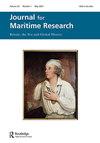波罗的海的英国海军
Q3 Arts and Humanities
引用次数: 0
摘要
政府在购买F35的B (STOVL)或C (CATOBAR)版本上摇摆不定。2015年的SDSR,“英国在世界上的声音”,继续设想英国武装部队的全球使命,尽管航母在其中的角色已经改变。CVA-01的取消是合理的,理由是“单独干预一个装备精良的敌人……虽然联合战争仍然是英国的首选作战方式,但现在人们认为,其两艘新的65000吨伊丽莎白女王级航空母舰(将于2017年和2020年服役)在这方面发挥了作用。然而,由于只增加了400名新兵,航母对船员的巨大需求将对舰队的构成、人力和护航数量产生连锁反应,就像40年前一样。然而现在,就像当时一样,航母依然存在本文章由计算机程序翻译,如有差异,请以英文原文为准。
The British Navy in the Baltic
government’s flip-flopping over the purchase of either the B (STOVL) or C (CATOBAR) version of the F35. The 2015 SDSR, ‘Britain’s voice in the world’, continues to envisage a global mission for the country’s armed forces, though the role of the carrier within that has changed. CVA-01’s cancellation was justified on the grounds that ‘intervention alone against a well-armed enemy... should no longer be a capability that Britain would retain’ (74), and while coalition warfare remains Britain’s preferred modus operandi, it is now perceived that its two new 65,000-ton Queen Elizabeth-class aircraft carriers (due for commissioning in 2017 and 2020) have a role to play in that. With an increase of just 400 recruits, however, the heavy crew demands of the carriers will have a knock-on effect upon the fleet’s composition, its manpower and escort numbers, just as they would have four decades earlier. Yet now, as it was then, the carrier remains
求助全文
通过发布文献求助,成功后即可免费获取论文全文。
去求助
来源期刊

Journal for Maritime Research
Arts and Humanities-History
自引率
0.00%
发文量
0
期刊介绍:
The Journal for Maritime Research ( JMR ), established by the National Maritime Museum in 1999, focuses on historical enquiry at the intersections of maritime, British and global history. It champions a wide spectrum of innovative research on the maritime past. While the Journal has a particular focus on the British experience, it positions this within broad oceanic and international contexts, encouraging comparative perspectives and interdisciplinary approaches. The journal publishes research essays and reviews around 15-20 new books each year across a broad spectrum of maritime history. All research articles published in this journal undergo rigorous peer review, involving initial editor screening and independent assessment, normally by two anonymous referees.
 求助内容:
求助内容: 应助结果提醒方式:
应助结果提醒方式:


